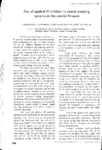Use este identificador para citar ou linkar para este item:
http://www.alice.cnptia.embrapa.br/alice/handle/doc/670612Registro completo de metadados
| Campo DC | Valor | Idioma |
|---|---|---|
| dc.contributor.author | DINKELMEYER, H. | pt_BR |
| dc.contributor.author | LEHMANN, J. | pt_BR |
| dc.contributor.author | KAISER, K. | pt_BR |
| dc.contributor.author | TEIXEIRA, W. G. | pt_BR |
| dc.contributor.author | RENCK, A. | pt_BR |
| dc.contributor.author | ZECH, W. | pt_BR |
| dc.date.accessioned | 2014-12-26T01:28:30Z | - |
| dc.date.available | 2014-12-26T01:28:30Z | - |
| dc.date.created | 2001-04-12 | pt_BR |
| dc.date.issued | 2000 | pt_BR |
| dc.identifier.citation | In: CONGRESSO BRASILEIRO DE SISTEMAS AGROFLORESTAIS, 3., 2000, Manaus. Sistemas agroflorestais: manejando a biodiversidade e compondo a paisagem rural - resumos expandidos. Manaus: Embrapa Amazonia Ocidental, 2000. | pt_BR |
| dc.identifier.uri | http://www.alice.cnptia.embrapa.br/alice/handle/doc/670612 | pt_BR |
| dc.description | Aim of the study was to investigate the nitrogen dynamics and the fate of applied nitrogen fertilizer in the soil-plant system of a mixed cropping system consisting of peach palm, cupuacu, urucu, and Brazil nut, in the Manaus-AM (Brasil). According the results, annato, cupuacu and peach palm seemed to take up more than 90% of th incorporated nitrogen fertilizer under their own canopy. However, Brazil nut took up more than 70% of the fertilized nitrogen from the fertilized areas under the canopies of the neighboring trees (peach palm: 40%, annato: 25%, cupuacu: 8%) two weeks of the fertilizer application. At the end of the rainy season, Brazil nut even took up more than 80% from underneath neighboring trees crops (peach palm: 42%, annato: 36%, cupuacu: 6%). Furthemrmore, peach palm and Brazil nut were better able than the other two trees in reducing nutrient leaching due to their deep root system. | pt_BR |
| dc.language.iso | eng | eng |
| dc.rights | openAccess | eng |
| dc.subject | Agrofloresta | pt_BR |
| dc.subject | Bixa orella | pt_BR |
| dc.subject | Urucu | pt_BR |
| dc.subject | Brasil | pt_BR |
| dc.subject | Amazonas | pt_BR |
| dc.subject | Manaus | pt_BR |
| dc.subject | Sustainability | pt_BR |
| dc.subject | Agroforesty | pt_BR |
| dc.subject | Fertilizers application | pt_BR |
| dc.title | Fate of applied N fertilizer in mixed cropping systems in the central Amazon. | pt_BR |
| dc.type | Artigo em anais e proceedings | pt_BR |
| dc.date.updated | 2014-12-26T01:28:30Z | pt_BR |
| dc.subject.thesagro | Adubação | pt_BR |
| dc.subject.thesagro | Bactris Gasipaes | pt_BR |
| dc.subject.thesagro | Bertholletia Excelsa | pt_BR |
| dc.subject.thesagro | Castanha do Para | pt_BR |
| dc.subject.thesagro | Cultivo Multiplo | pt_BR |
| dc.subject.thesagro | Desenvolvimento Sustentável | pt_BR |
| dc.subject.thesagro | Floresta Tropical Úmida | pt_BR |
| dc.subject.thesagro | Lixiviação | pt_BR |
| dc.subject.thesagro | Nitrogênio | pt_BR |
| dc.subject.thesagro | Raiz | pt_BR |
| dc.subject.thesagro | Pupunha | pt_BR |
| dc.subject.thesagro | Uso da Terra | pt_BR |
| dc.subject.nalthesaurus | land use | pt_BR |
| dc.subject.nalthesaurus | leaching | pt_BR |
| dc.subject.nalthesaurus | nitrogen | pt_BR |
| dc.subject.nalthesaurus | multiple cropping | pt_BR |
| dc.subject.nalthesaurus | tropical rain forests | pt_BR |
| dc.format.extent2 | p. 196-197. | pt_BR |
| riaa.ainfo.id | 670612 | pt_BR |
| riaa.ainfo.lastupdate | 2014-12-23 | pt_BR |
| dc.contributor.institution | University of Bayreuth; Embrapa Amazonia Ocidental. | pt_BR |
| Aparece nas coleções: | Artigo em anais de congresso (CPAA)  | |
Arquivos associados a este item:
| Arquivo | Descrição | Tamanho | Formato | |
|---|---|---|---|---|
| CPAADOC.7207.pdf | 21,8 MB | Adobe PDF |  Visualizar/Abrir |









